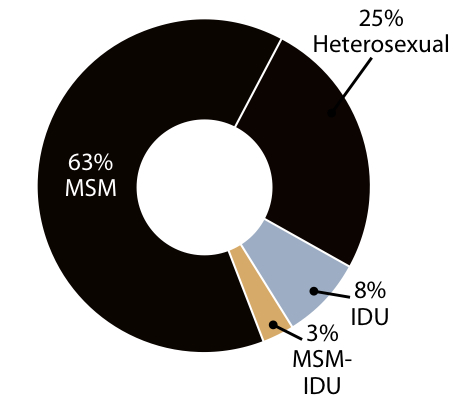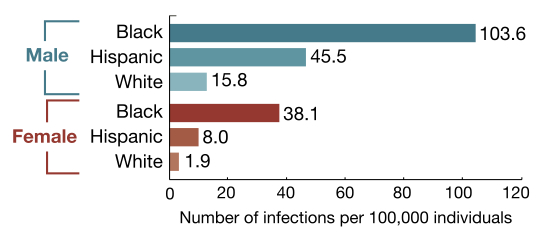An ongoing dialogue on HIV/AIDS, infectious diseases,
January 1st, 2013
HIV Incidence: The Latest Numbers
The CDC has recently issued the latest report on HIV incidence (i.e., new infections) in the United States, and as always it’s fascinating to review the numbers.
To start, the year-by-year estimated incidence:
2007: 53,200
2008: 47,500
2009: 45,000
2010: 47,500 (38,000 men, 9,500 women)
Nope, not much change. Will data from HPTN 052 — published in the summer of 2011 — eventually have an impact? I think so, as the results strongly influenced both treatment guidelines and patients’ willingness to start therapy. A more pessimistic view is that the treatment-as-prevention message from 052 won’t have much of an effect, since data like these show that only a minority of people with HIV are actually on successful treatment. We’ll see.
This latest CDC report then highlights two important trends, one good news, one not-so-good:
The new analysis also finds two noteworthy trends among heavily affected populations: early signs of an encouraging decrease in new HIV infections among black women (21 percent decrease between 2008 and 2010), and a troubling and continuing increase in new infections among young gay and bisexual men (22 percent increase over the same time period).
In these days of fiscal cliff wrangling, I could use my taxpayer’s prerogative and show you a whole slew of figures — but these three really stand out as giving us a snapshot of who gets HIV in the United States these days:
1. Incidence in 2010 among various “risk groups” (MSM, men who have sex with men; IDUs, injection drug users):
2. Proportion of new infections by transmission category:
3. Rate of new infections by race, ethnicity, and sex:
The glass-half-full message is that HIV prevention efforts are clearly working, at least to some extent, as the prevalence of HIV — the number living with the virus — continues to increase, yet the incidence stays the same.
The half-empty view? The continued shift of the epidemic to younger MSM of color will make additional gains difficult, as this is a patient population that could be challenging to reach.





Pretty amazing that white heterosexual men don’t even make the bar graph, making me assume that there were less than 850 cases in this demographic.
It is interesting to note how HIV affects different sectors of society. I have been seeing male to female transgender patients lately that do not identify themselves as homosexuals and the statistics presented by CDC are not specific for this high risk group.
I think we should start collecting data on transgender people on a totally new category as they may be misclassified as women if they mark the gender category box themselves or males if someone else is marking it for them. Same story with sexual orientation.
I think Juan Kattan makes an excellent point. Thanks for breaking down the stats for us and presenting the data graphically, Dr. Sax.
Nice blog posting on the US epidemic. I wanted you to see the paper our group just published in PLoS One showing that one problem with the racial disparity is that the higher the prevalence in black MSM, the higher the risk of infection per sexual act. Thus, an intervention to decrease transmission has a lower efficacy in this group that is already hard to reach.
Here’s the link:
http://www.plosone.org/article/info%3Adoi%2F10.1371%2Fjournal.pone.0053284
This is a nice posting. Rarely though does one see incidence by income level or socioeconomic status. I think that poverty is driver in this country like it is outside the US. Sex for food, shelter, drugs, security. Poverty is not a risk factor we discuss much or do prevention programs around–improving housing, food security, violence prevention/interventions.
A clear synopsis by Dr. Sax.
I conclude that all of us in HIV care must continue trying to put as many patients as possible into adequate therapy and emphasize the message of prevention. Only time will tell if the number of incident cases will decrease.